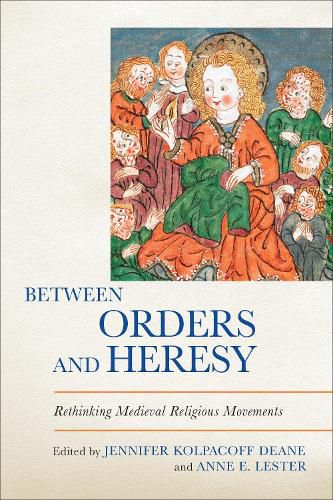Readings Newsletter
Become a Readings Member to make your shopping experience even easier.
Sign in or sign up for free!
You’re not far away from qualifying for FREE standard shipping within Australia
You’ve qualified for FREE standard shipping within Australia
The cart is loading…






Between Orders and Heresy foregrounds the dynamic, creative, and diverse late medieval religious landscapes that flourished within the spaces of social and ecclesiastical structures.
This collection reconsiders the arguments put forward in Herbert Grundmann’s monumental book, Religious Movements in the Middle Ages, and challenges his traditional interpretive binary, recognized as the shared origins of many medieval religious movements. The contributors explore the social relationships fostered between secular clergy members, including parish priests, local canons, and aristocratic confessors, and examine the ways in which laypeople inspired and engaged in devotion beyond religious orders.
Each essay in the volume considers a major theme in medieval religious history, such as the implementation of apostolic ideals, pastoral relationships, crusade connections, vernacular traditions, and reform. Organized to historicize and challenge the deeply embedded historiographical tendencies that have long distorted the complex dynamics of the late medieval world, Between Orders and Heresy the binary of orders and heresies.
‘This is one of the strongest and most stimulating collections of essays I’ve ever read. The volume is thrilling, not only for its cohesiveness but also for its original insights and approaches, and illuminates important later medieval developments in women’s religious expression and institutions.’ - Maureen C. Miller, Professor of History, University of California, Berkeley
‘This impressive volume represents an excellent gathering of medieval scholars. The essays, each quite distinct in focus, investigate individual instances of religious movements in medieval Europe, while also directly or indirectly assessing Grundmann’s historical outlook as well as its cogency, or lack thereof, to account for the available evidence in current scholarship.’ - John Van Engen, Andrew V. Tackes Professor Emeritus of Medieval History, University of Notre Dame
$9.00 standard shipping within Australia
FREE standard shipping within Australia for orders over $100.00
Express & International shipping calculated at checkout
Between Orders and Heresy foregrounds the dynamic, creative, and diverse late medieval religious landscapes that flourished within the spaces of social and ecclesiastical structures.
This collection reconsiders the arguments put forward in Herbert Grundmann’s monumental book, Religious Movements in the Middle Ages, and challenges his traditional interpretive binary, recognized as the shared origins of many medieval religious movements. The contributors explore the social relationships fostered between secular clergy members, including parish priests, local canons, and aristocratic confessors, and examine the ways in which laypeople inspired and engaged in devotion beyond religious orders.
Each essay in the volume considers a major theme in medieval religious history, such as the implementation of apostolic ideals, pastoral relationships, crusade connections, vernacular traditions, and reform. Organized to historicize and challenge the deeply embedded historiographical tendencies that have long distorted the complex dynamics of the late medieval world, Between Orders and Heresy the binary of orders and heresies.
‘This is one of the strongest and most stimulating collections of essays I’ve ever read. The volume is thrilling, not only for its cohesiveness but also for its original insights and approaches, and illuminates important later medieval developments in women’s religious expression and institutions.’ - Maureen C. Miller, Professor of History, University of California, Berkeley
‘This impressive volume represents an excellent gathering of medieval scholars. The essays, each quite distinct in focus, investigate individual instances of religious movements in medieval Europe, while also directly or indirectly assessing Grundmann’s historical outlook as well as its cogency, or lack thereof, to account for the available evidence in current scholarship.’ - John Van Engen, Andrew V. Tackes Professor Emeritus of Medieval History, University of Notre Dame